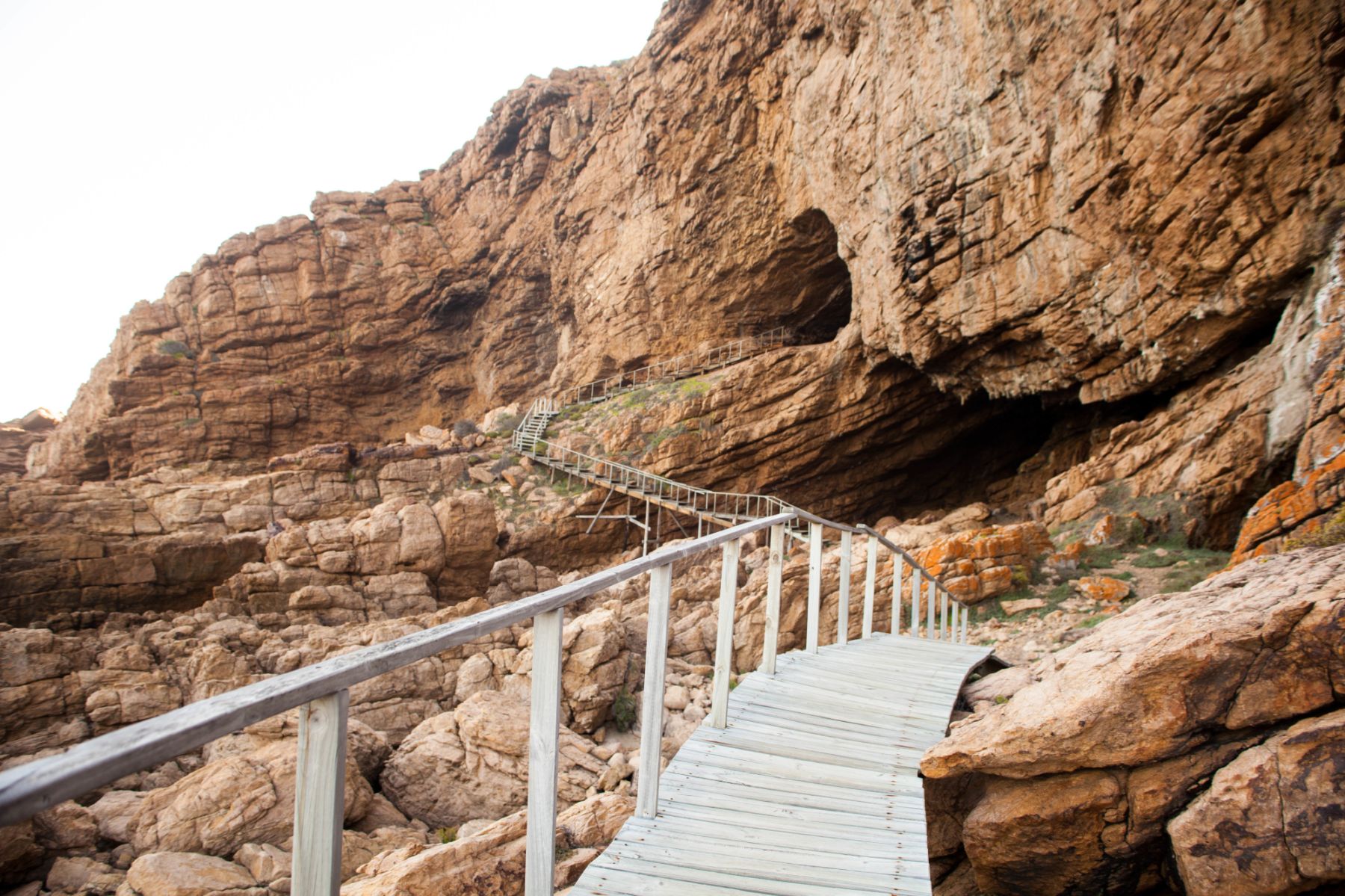Discover the earliest forms of art and technology
Pinnacle Point | Mossel Bay
At the archaeological site of Pinnacle Point, an international team of researchers has found some of the earliest evidence for modern human behaviour. Excavations in the various caves have shown that here, for possibly the first time in the archaeological record, early humans systematically exploited shellfish as part of their diet, heated silcrete (a type of rock) to make more efficient stone tools; made advanced “micro-lithic” stone tools for projectile weapons and consistently ground ochre pigment, either for symbolic or functional purposes.
The early “pyrotechnology” suggests that our Middle Stone Age ancestors recognized that they could substantially alter and improve a raw material with fire to make it more suitable for its required final use and that they were capable of planning and executing a long chain of processes to manufacture tools, which is an expression of complex cognition. Pinnacle Point has also been instrumental in the reconstruction of overall environmental changes over the course of its occupation and beyond. Scientists have been able to reconstruct the position of the sea level and of the vegetation that was growing on the
Palaeo-Agulhas Plain when the sea level retracted up to 30km from the current caves during glacial periods, such as at 60 000 years ago. Visitors can plan and book a Point of Human Origins Experience tour to gain profound insight not only into the discoveries at the site, and how Middle Stone Age people were living here between 170 000 and 40 000 years ago, but also to reflect on where we came from, consider where we are now – and where we are heading as the human race. This site was declared a Provincial Heritage Site in 2012 and is now one of the UNESCO World Heritage sites in South Africa . It is expected to be declared a World Heritage Site within the next few years.
For more information, please visit: www.humanorigin.co.za
